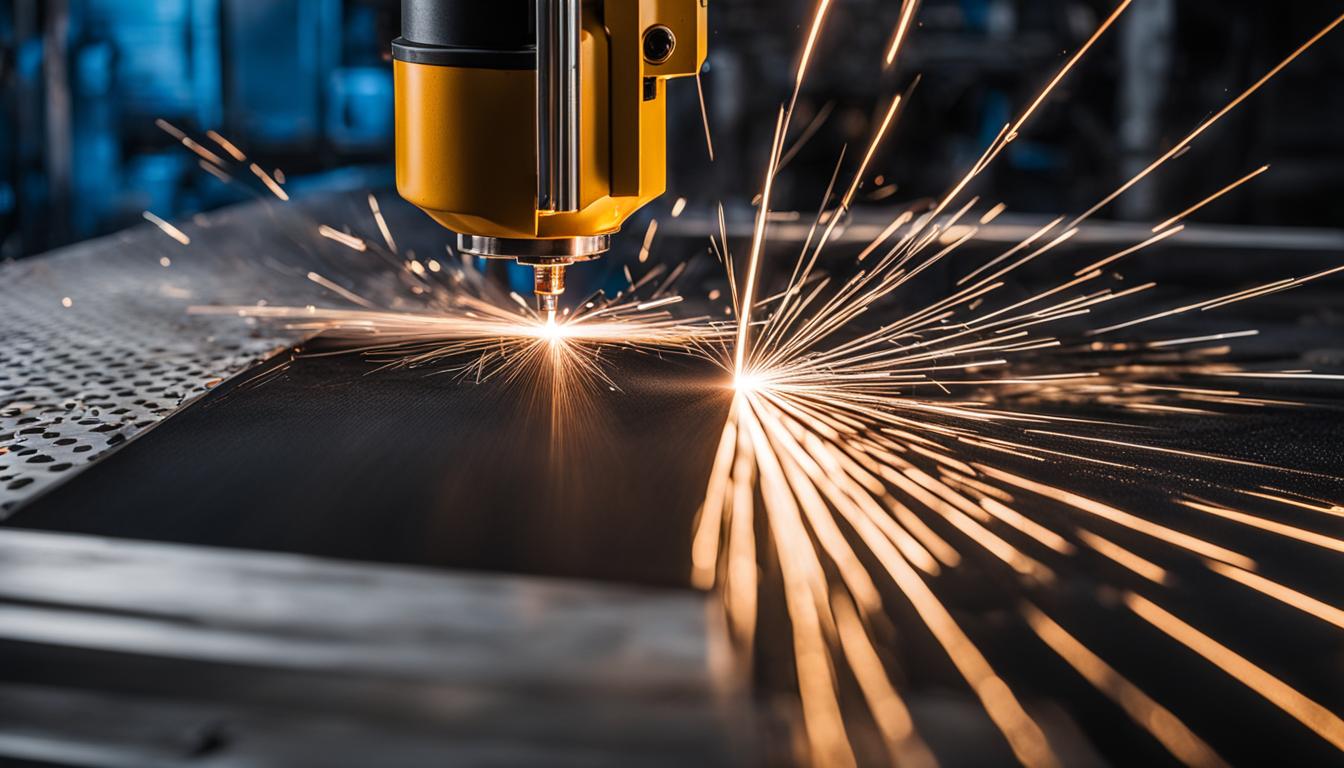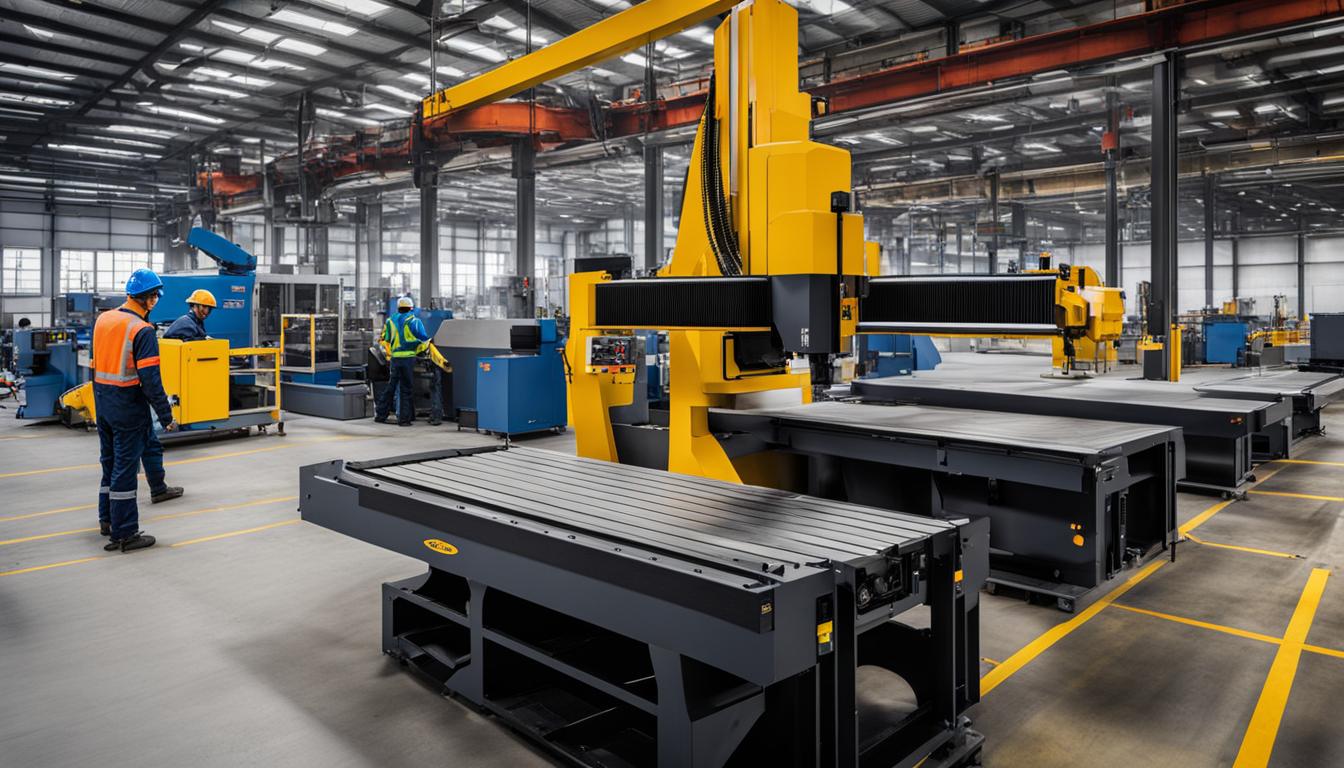CNC machinery is rapidly evolving and revolutionizing the manufacturing industry, providing mobile and on-the-go solutions for CNC milling processes. In 2024, we can expect to see the rise of mobile CNC milling, paving the way for convenient and efficient manufacturing solutions.
With advancements in technologies such as plasma cutting, CNC laser cutting, and DIY hand-held flexible pin markers, manufacturers now have the ability to perform CNC milling processes on the move. This allows for greater flexibility, faster turnaround times, and the ability to cater to on-site machining needs.
Mobile CNC milling offers a range of benefits for various industries, including automotive, aerospace, and mold making. These industries often require precise and complex designs to be achieved on hard and conductive materials. With mobile CNC milling, manufacturers can easily make modifications and improvements in real-time, ensuring higher productivity and adaptability to market demands.
As we look towards the future of CNC milling, advancements in technology will continue to reshape the manufacturing landscape. In 2024, we can expect further developments in areas such as IoT-based mobile phone machine status alerts and improved hybrid machines that combine laser, CNC, and 3D printing. These advancements will enhance efficiency, flexibility, and cost-effectiveness in CNC milling processes.
Stay tuned to discover the latest trends and advancements in mobile CNC milling as we explore the future of this innovative manufacturing solution.
Plasma Cutting: Efficient Metal Cutting with Plasma Cutter Machines
Plasma cutting is a highly efficient technology employed for metal cutting. By utilizing a plasma cutter machine, precise and clean cuts can be achieved in a shorter time compared to traditional cutting methods. One of the key advantages of plasma cutting is its ability to minimize heat affected zones, resulting in a higher quality cut.
To perform plasma cutting, these machines use compressed air or other gases at high velocity and pressure to create an electrical arc. This arc converts the gas into plasma, which is then directed onto the material being cut. The plasma, being extremely hot, swiftly melts the metal and carries away the molten material, leaving behind a smooth and accurate cut.
Plasma cutters find wide applications in various industries such as plumbing, refrigeration, and steel fabrication. They are particularly favored in scenarios where precise and intricate cuts are required. Additionally, plasma cutting provides the advantage of versatility, as it can be used on a range of metals including steel, aluminum, and stainless steel, making it a popular choice for metalworking professionals.
| Advantages of Plasma Cutting | Applications |
|---|---|
|
|
Plasma Cutting vs. Other Metal Cutting Methods
When compared to traditional metal cutting methods, such as oxy-fuel cutting or mechanical cutting, plasma cutting offers distinct advantages. Oxy-fuel cutting relies on the combustion of oxygen and a fuel gas, typically acetylene or propane, to generate a chemical reaction that melts the metal. While effective for thicker materials, oxy-fuel cutting is less precise and slower compared to plasma cutting.
Mechanical cutting, such as using shear blades or saws, also has its limitations. It can lead to rough edges and requires more post-cutting processes. In contrast, plasma cutting provides superior precision and a clean finish, reducing the need for additional finishing work.
In conclusion, plasma cutting with CNC plasma cutter machines provides efficient and accurate metal cutting solutions. Its ability to deliver precise cuts with minimal heat affected zones makes it a preferred choice in various industries. With advancements in technology, plasma cutting continues to evolve, offering improved cutting speeds, increased efficiency, and enhanced performance.
CNC Laser Cutting: Versatile Cutting Technology for a Wide Range of Materials
CNC laser cutting technology is revolutionizing the manufacturing industry with its versatility and ability to cut a wide variety of materials. Whether it’s metal, wood, plastics, glass, or even stones, CNC laser cutting offers precision and efficiency in achieving intricate designs. By integrating computer control, this cutting-edge technology allows for precise and customizable cutting solutions, making it a valuable tool for various industries.
One of the key advantages of CNC laser cutting is its ability to imprint or engrave complex patterns on different surfaces. From artwork and decorative marking to barcodes and traceability labels, CNC laser cutting can achieve high levels of detail and precision. This makes it an ideal choice for industries that require intricate designs and part traceability.
Furthermore, CNC laser cutting provides clean and precise cuts with minimal heat affected zones. This is crucial when working with delicate materials or when accuracy is paramount. By using a concentrated laser beam, CNC laser cutting ensures clean and accurate cuts, reducing the need for secondary processes or finishing.
In summary, CNC laser cutting technology offers versatile and precise cutting solutions for a wide range of materials. Its ability to achieve intricate designs, imprint complex patterns, and provide clean cuts makes it an essential tool in industries that require precision and customization. As the manufacturing industry continues to evolve, CNC laser cutting will play a vital role in driving innovation and meeting the demands of the future.

The Advantages of CNC Laser Cutting:
- Precision cutting of various materials
- Ability to imprint complex patterns on different surfaces
- High level of detail and accuracy
- Minimal heat affected zones
- Clean and precise cuts
Applications of CNC Laser Cutting:
CNC laser cutting technology finds applications in various industries:
- Automotive industry: Cutting precise and intricate parts for vehicles
- Aerospace industry: Creating lightweight components with high precision
- Electronics industry: Engraving circuit boards and creating precise electronic components
- Art and design industry: Sculpting and engraving intricate designs
- Architectural industry: Creating detailed models and prototypes
| Material | Advantages |
|---|---|
| Metal | – High precision cuts – Clean edges – Minimal distortion |
| Wood | – Intricate designs – Smooth cuts – Minimal waste |
| Plastics | – Clean cuts – No burrs or rough edges – High precision |
| Glass | – Intricate engraving – Smooth edges – Minimal chipping |
| Stones | – Detailed carving – Precision engraving – Smooth finish |
Advancements in Mobile CNC Milling: On-the-Go Manufacturing Solutions
Mobile CNC milling technology has brought about significant advancements in the manufacturing industry, offering on-the-go capabilities for CNC milling processes. These innovations include wire spark erosion, sinker EDMs, waterjet cutters, dot peen marking, and the hybrid of laser, CNC, and 3D printing. These technologies have revolutionized the way manufacturers create precise and complex designs on hard and conductive materials, making them highly valuable in industries such as automotive, aerospace, and mold making.
One notable advancement in mobile CNC milling is wire spark erosion, which uses electrical discharge machining to remove material from workpieces. This process is highly precise and allows for intricate shapes to be formed with ease. Sinker EDMs, on the other hand, use an electrode to create cavities or shapes in a workpiece, providing manufacturers with versatility and accuracy in their milling operations.
Waterjet cutters are another mobile CNC milling solution that has gained popularity due to their ability to cut through a wide range of materials, including metals, plastics, and composites. These cutters use a high-pressure jet of water mixed with abrasive particles to achieve precise and clean cuts. Additionally, dot peen marking technology offers the capability to mark or engrave patterns, logos, or serial numbers on various surfaces, providing manufacturers with traceability and branding solutions.
The hybrid of laser, CNC, and 3D printing technology combines the strengths of each process to create intricate and customizable designs. This integration allows for the production of complex parts and components with high precision and efficiency. With these advancements in mobile CNC milling, manufacturers can now achieve flexibility, efficiency, and real-time modifications and improvements in their manufacturing processes, ultimately leading to increased productivity and cost-effectiveness.
The Future of Mobile CNC Milling: Trends and Advancements in 2024
The future of mobile CNC milling looks bright with continuous advancements in technology and the growing demand for on-the-go manufacturing solutions. In 2024, we can expect to witness exciting developments that will further enhance the capabilities of mobile CNC milling.
One of the key trends we anticipate is the integration of IoT-based mobile phone machine status alerts. This technology will enable manufacturers to monitor and control their CNC milling machines remotely, providing real-time updates on the machine’s performance, production progress, and maintenance needs. This level of connectivity will enhance efficiency and allow for prompt troubleshooting, minimizing downtime and maximizing productivity.
Furthermore, we can expect significant improvements in hybrid machines that combine the power of laser cutting, CNC machining, and 3D printing. These advanced machines will offer unparalleled versatility and precision, allowing manufacturers to create complex designs with ease. The integration of these technologies will provide a seamless workflow and open up new possibilities in various industries, including automotive, aerospace, and prototyping.
Looking ahead, we can also anticipate the emergence of more portable and affordable options for DIY hand-held flexible pin markers. These compact and user-friendly devices will empower small businesses and individual creators to bring their ideas to life. With the ability to mark and engrave on a wide range of materials, these handheld devices will offer flexibility and customization at a fraction of the cost of traditional CNC milling machines.
